
Gaelic football, commonly known as simply Gaelic, GAA or football, is an Irish team sport. A form of football, it is played between two teams of 15 players on a rectangular grass pitch. The objective of the sport is to score by kicking or punching the ball into the other team's goal or between two upright posts above the goal and over a crossbar 2.5 metres above the ground.
The Field Game is one of two codes of football devised and played at Eton College. The other is the Eton Wall Game. The game is like association football in some ways – the ball is round, but one size smaller than a standard football, and may not be handled – but the off-side rules – known as 'sneaking' – are more in keeping with rugby. There is also a small scrum or "Bully" of either six or seven a side. Goals can be scored much as in football, although there is no goalkeeper. But a team gains more points for scoring a 'rouge'. To score a rouge a player must kick the ball so that it deflects off one of the opposing players, or achieve a charge-down, and then goes beyond the opposition's end of the pitch. The ball is then 'rougeable' and must be touched – although not necessarily to the ground – by an attacking player to complete the rouge for five points. Rouges are similar to tries in that the scoring team then attempts to convert them for two points.
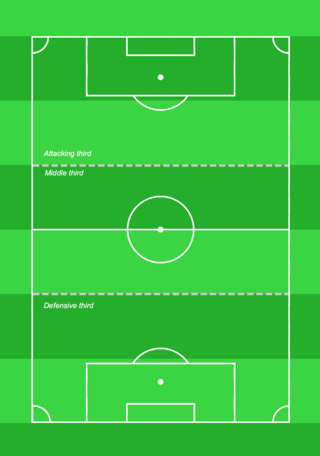
Team tactics as well as individual skills are integral for playing association football. In theory, association football is a very simple game, as illustrated by Kevin Keegan's namely assertion that his tactics for winning a match were to "score more goals than the opposition". Tactical prowess within the sport is nonetheless a craftsmanship of its own, and one of the reasons why managers are paid well on the elite level. Well-organised and ready teams are often seen beating teams with more skillful players on paper. Manuals and books generally cover not only individual skills but tactics as well.

A corner kick, commonly known as a corner, is the method of restarting play in a game of association football when the ball goes out of play over the goal line, without a goal being scored and having last been touched by a member of the defending team. The kick is taken from the corner of the field of play nearest to the place where the ball crossed the goal line.
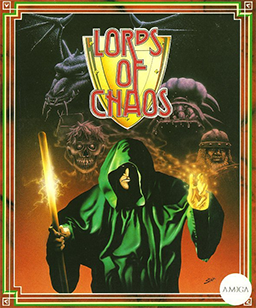
Lords of Chaos is a turn-based tactics tactical role-playing game published by Blade Software in 1990. It is the sequel to Chaos: The Battle of Wizards and an ancestor of the popular X-COM series of games, also written by Julian Gollop. In Lords of Chaos each player controls a wizard who can cast various magic spells. The spells have various effects, for example summoning other creatures, or damaging opposing creatures and wizards. The game can be played against a computer-controlled opponent or by up to four human players.
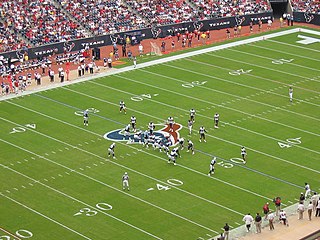
Gameplay in American football consists of a series of downs, individual plays of short duration, outside of which the ball is or is not in play. These can be plays from scrimmage – passes, runs, punts or field goal attempts – or free kicks such as kickoffs and fair catch kicks. Substitutions can be made between downs, which allows for a great deal of specialization as coaches choose the players best suited for each particular situation. During a play, each team should have no more than 11 players on the field, and each of them has specific tasks assigned for that specific play.

The tennis scoring system is a standard widespread method for scoring tennis matches, including pick-up games. Some tennis matches are played as part of a tournament, which may have various categories, such as singles and doubles. The great majority are organised as a single-elimination tournament, with competitors being eliminated after a single loss, and the overall winner being the last competitor without a loss. Optimally, such tournaments have a number of competitors equal to a power of two in order to fully fill out a single elimination bracket. In many professional and top-level amateur events, the brackets are seeded according to a recognised ranking system, in order to keep the best players in the field from facing each other until as late in the tournament as possible; additionally, if byes are necessary because of a less-than-full bracket, those byes in the first round are usually given to the highest-seeded competitors.
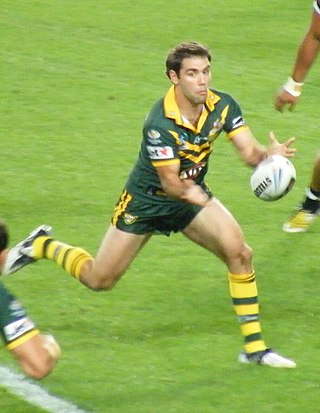
Like most forms of modern football, rugby league football is played outdoors on a rectangular grass field with goals at each end that are attacked and defended by two opposing teams. The rules of rugby league have changed significantly over the decades since rugby football split into the league and union codes. This article details the modern form of the game and how it is generally played today, although rules do vary slightly between specific competitions.

Boppin' is a puzzle-oriented video game created by Jennifer Diane Reitz in 1991, developed under the company name Accursed Toys and published by Karmasoft for the Amiga computer. Around that time Karmasoft held a level design contest. The game sold poorly with 284 copies, so Jennifer got it republished by Apogee Software with up to 256 colors on screen. Due to mature content containing blood and seppuku, Apogee included a disclaimer in the manual that the game contained potentially offensive imagery, as well as part of a manifesto from Accursed Toys stating that their games were produced for an audience of adult gamers who are mostly 25 and older.

Escape from the Planet of the Robot Monsters is a multidirectional shooter released in arcades by Atari Games in 1989. The game is styled after campy science fiction B movies of the 1950s. It was ported to the Amiga, Amstrad CPC, Atari ST, Commodore 64, MS-DOS, SAM Coupé, and ZX Spectrum.

Cornhole is a lawn game popular in North America in which players or teams take turns throwing fabric bean bags at an inclined board with a hole in its far end. The goal of the game is to score points by either landing a bag on the board or putting a bag through the hole.
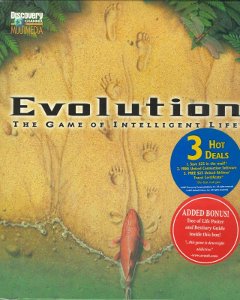
Evolution: The Game of Intelligent Life is a life simulation and real-time strategy computer game that allows players to experience, guide, and control evolution from an isometric view on either historical earth or on randomly generated worlds while racing against computer opponents to reach the top of the evolution chain, and gradually evolving the player's animals to reach the "grand goal of intelligent life". It was published by Interplay Entertainment and Discovery Channel Multimedia in 1997.
This is a general glossary of the terminology used in the sport of rugby union. Where words in a sentence are also defined elsewhere in this article, they appear in italics.
Rugby league football has accrued considerable jargon to describe aspects of the game. Many terms originate in the Laws of the Game. Some aspects of the game have more than one term referring to them. Different terms have become popularly used to describe an aspect of the game in different places, with notable differences between the Northern and Southern Hemispheres.

This list is an alphabetical glossary of Australian rules football terms, jargon and slang. While some of these entries are shared with other sports, Australian rules football has developed a unique and rich terminology.
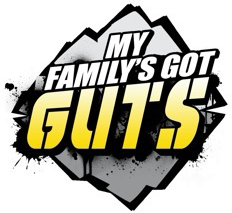
My Family's Got Guts is a family game show that aired on Nickelodeon. It was a revival of Guts, and aired from September 15 to September 27, 2008. The show was taped in Sound Stages 23 and 24 at Universal Studios Florida, housing the Extreme Arena and the Aggro Crag, respectively. Stage 21, where the original Guts program taped, was most recently occupied by production of Impact Wrestling. This version is hosted by Ben Lyons and officiated by Australian celebrity Asha Kuerten. It was the first Nickelodeon production to be produced at Universal Studios Florida since the closing of Nickelodeon Studios in 2005. For unknown reasons, season 2 never aired in North America. However, the season would air in its entirety in other countries.

The Chaos Engine 2 is a top-down shooter video game, and sequel to The Chaos Engine, released for the Amiga in 1996 and developed by The Bitmap Brothers. A Sega Mega Drive version was planned but never released.

Deathbringer is a 1991 side scrolling action game developed by Oxford Digital Enterprises and published by Empire that was released for the Amiga, DOS, and Atari ST.
The third season of The Challenge: All Stars premiered on Paramount+ on May 11, 2022. The season features twenty-five cast members from The Real World and Road Rules competing for $500,000.















